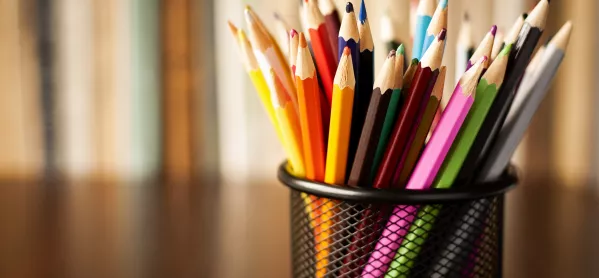- Home
- How Covid barriers can become creative opportunities
How Covid barriers can become creative opportunities

My international school in Spain was thrust into online learning in March, with a full timetable of lessons taking place at home through our new best friend: Google Meet.
As a secondary teacher of art and music, I had queries from some of my colleagues, who asked: “How can you teach those subjects online?”
The question is understandable but I felt there would still be opportunities for learning in my subject as a result of this - it was just about being creative.
Pop art
In my lessons, I have always liked to use the ever-growing abundance of free, online creative websites.
Many of these websites are closely modelled on professional software, such as Photopea (based on Photoshop) and Bandlab or Soundation (on recording studio software).
With students having further access to laptops, iPad, and camera phones, the scope of their work could grow, giving them the opportunity to develop further depth in their work, skills and understanding.
One example of this was a Year 9 project on Pop Art.
During this, students watched videos on YouTube I selected about the movement, acted out and filmed hypothetical interviews with famous artists, completed a series of activities devised by the Tate Gallery (on their website), looked at the sculptures of Claus Oldenburg (he makes giant versions of everyday things and places them in public spaces) before designing and making their own using everyday household materials.
These were then photographed and edited into images of public spaces, using a free online program. The groups I did this project with were very engaged and produced fantastic work.
Overall, the project managed to encapsulate a lot of skills and knowledge I strive to instil in my students during the first year of their GCSE in art and showed clearly that not being in the classroom is no barrier to creative projects.
Musical interpretations
In music, I had similarly good results.
Students learned musical theory using a highly interactive and visual website before studying popular songs of their choosing, developing their own interpretations and recording them using online software.
They also enjoyed creating their own musical instruments from found objects, inspired by the wonderful YouTube channel Bash the Trash.
Teachers and education are at their best when they are creative; teachers all over the world have been forced to readdress the content and format of what they deliver. For me, planning is one of the most enjoyable aspects of what we do.
On the other side of the coin, we should continue to seek out positive ideas and action, to help keep students’ education fun and inspiring.
Distanced games
It’s not just arts and music where this sort of creative can shine, either.
In our playgrounds, for example, where children in many schools are required to stand on spots two metres apart, games and activities can be used that take advantage of this distance as part of the game: Chinese whispers, giant Guess Who, developing synchronized dance sequences and much more.
Teachers cannot afford to see Covid restrictions as insurmountable barriers - we have to see them, and help our pupils see them, as just a context within which we have to think differently and overcome.
Schools should share this positivity and make their schools feel like exciting places that are committed to doing the best for their students.
Not every idea is great
The quest for new tools should however be carefully considered on an individual basis, to ensure that both teachers and students are not distracted and wasting their valuable time.
I did hear of a training session in which staff were being instructed on how to design a digital, cartoon version of themselves, using a video game-style program.
The idea behind this being that as students cannot see your entire face, they may appreciate seeing a friendly, digital cartoon version of it. More than an adequate amount of time was given to talking through the range of facial hair options.
Admittedly, many of our young people will be familiar with the notion of an avatar, but perhaps now, more than ever, what they need is to feel a strong connection with a real person and be able to express themselves.
Lewis Mason is an art and music teacher at The English International School of Castellón, and has taught internationally for two years
Keep reading for just £1 per month
You've reached your limit of free articles this month. Subscribe for £1 per month for three months and get:
- Unlimited access to all Tes magazine content
- Exclusive subscriber-only stories
- Award-winning email newsletters


